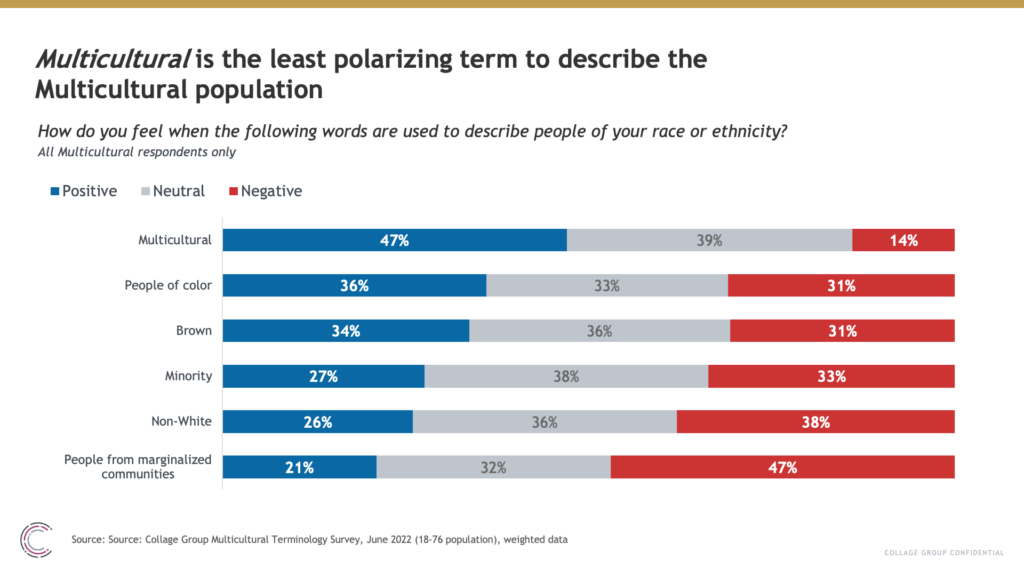Embrace Multicultural Terminology: Showing Empathy and Driving Empowerment

Getting language and labels right is a key component of authentically engaging across America’s diverse consumer segments. Unfortunately, it’s not easy to know which terminology to use given shifting consumer priorities and the challenges this creates for brands.
Fill out the form for an excerpt from our Understanding & Embracing Multicultural Terminology presentation.
To help our members navigate these tricky linguistic waters, we fielded a survey to 4,497 respondents between the ages of 18 and 76. The aim of this survey was to understand the racial and ethnic terminology that Hispanic, Black, and Asian Americans prefer so brands can make data-driven decisions when selecting what terms to use. This study reports our findings, focusing on the nuances of segment-specific terms and consumer preferences towards terms like Hispanic, Latino, Latina, Latinx, Black, African American, Asian, and Asian American.

Insights and marketing professionals can use these findings to craft outreach and messaging that respects consumer preferences and signals empathy and understanding. Additionally, the double clicks we offer by acculturation level, generation, and country of origin, when relevant, allow brands to better understand and speak to sub-segments that may have diverging preferences. Below are five key findings and action steps to keep in mind as you craft your strategy to achieve greater connection with diverse America.
Five Key Findings and Action Steps
- Hispanic Americans are most positive towards Hispanic and Latino/Latina as terms to refer to the segment as a whole. This holds across generation and country of origin. Use either of these terms when you need to refer to Hispanic Americans in general. If your target is Latin Americans living in the US (including those that do not speak Spanish), defer to Latino/Latina.
- Latinx continues to be a polarizing term, though younger Hispanics are more likely to feel positive towards it. Use Latinx if you wish to signal support for the efforts the term was introduced to address, but recognize you may fail to connect and even experience backlash as a result.
- Black Americans are generally positive towards both Black and African American as general descriptors. Use African-American to signal connection with the history of Black people in America, including past and current struggles for equality and justice. Use Black if you are hoping to signal inclusivity of individuals that are Black but may not connect with the history of Black people in America, such as recent immigrants from Africa or the Caribbean. This term can also signal connection with current struggles for equality and justice.
- Asian Americans are most positive towards Asian and Asian American as terms to refer to the segment as a whole. This holds across generation and most countries of origin. Use either of these terms when you need to refer to Asian Americans in general.
- Pacific Islanders express more negative sentiment towards all of the general descriptor terms except for People of Color. Consider using Country of Origin or Country of Origin-American if you are specifically referring to Americans of Pacific Island descent to minimize risk of backlash.
Contact us to learn more about how you can gain access to these diverse consumer insights and much more in our Cultural Intelligence Engine.